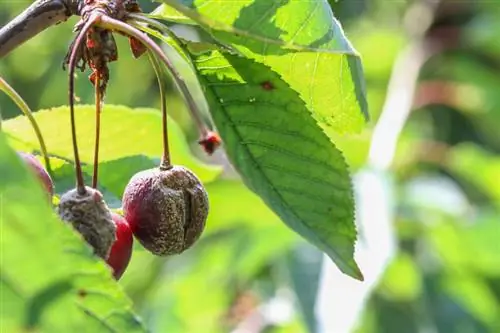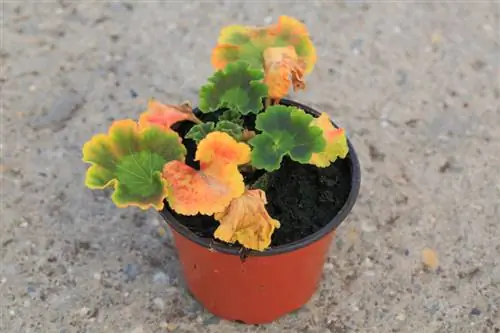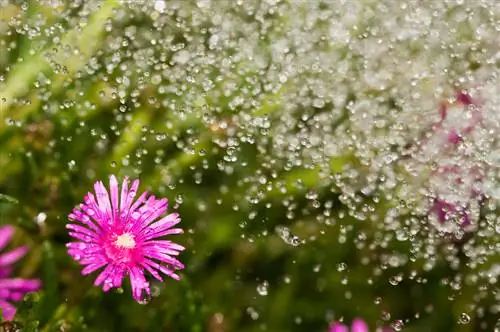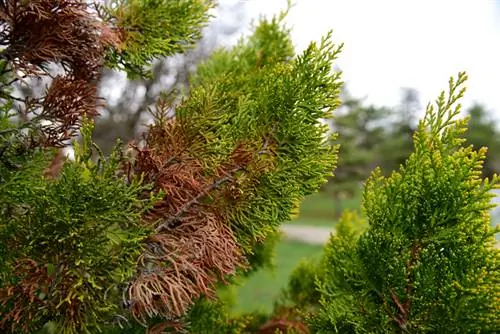- Author admin [email protected].
- Public 2023-12-16 16:46.
- Last modified 2025-01-23 11:20.
Not only pests, but also diseases can cause problems for the sour cherry. Discolored leaves that fall; fruits that rot; Blossoms that fall off, which diseases can affect the sour cherry and how can they be recognized?
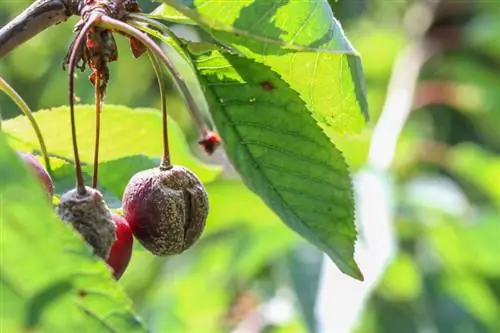
What diseases can affect sour cherries and how can they be prevented?
Common tart cherry diseases include gum blight, monilia, shotgun disease, spray spot disease and bacterial blight. Preventive measures include the right choice of location, regular thinning, well-drained soil and the choice of robust varieties such as 'Morina', 'Carnelian' or 'Sapphire'.
Damage to the wood: rubber foot
One of the most common types of damage to sour cherry wood is the so-called rubber foot. It prefers to attack the branches and/or the trunk area. Unfortunately, the end of the sour cherry is near when this disease attacks
You can recognize the rubber foot by light brown colored and translucent drops or lumps that are located directly on the wood of the sour cherry. There are rubber foci under the bark. They arise when tissue breaks down. The long-term consequence of the rubber foot is a complete death of the affected plant areas.
Leaf damage: Monilia, shotgun disease, spray spot disease
There are a number of fungal pathogens that primarily attack the leaves of sour cherries. They don't stop at other parts of the plant either. But you can usually recognize them early and best by their leaves.
If the leaves turn brown and dry out, Monilia may be to blame. If the leaves develop reddish to purple spots starting in June, it could be spray spot disease. If the leaves look like they have been shot through holes, shotgun disease is the culprit. All of these fungal pathogens or diseases cause the leaves to eventually fall off.
Damage to the fruits
The sour cherry tree appears he althy and bears a variety of fruits. But suddenly individual fruits dry up and remain on the tree as 'mummies'. The cause can be fruit rot, monilia or bacterial blight. When bacteria burn, dark spots appear on the fruit, which can deepen down to the stone core.
General preventive measures
If such diseases have occurred, the only solution is to remove the affected parts or chemicals. However, it is not advisable to use chemical clubs as they tend to reach into the groundwater and contaminate it.
Preventative measures to prevent such diseases include:
- good choice of location when planting
- regular cutting or thinning (goal: airy crown)
- well aerated and permeable soil
- choose a robust variety: 'Morina', 'Carnelian' or 'Sapphire'
Tips & Tricks
To prevent new infection, all affected parts of the plant should be rigorously removed. Attention: Do not put it in the compost!

